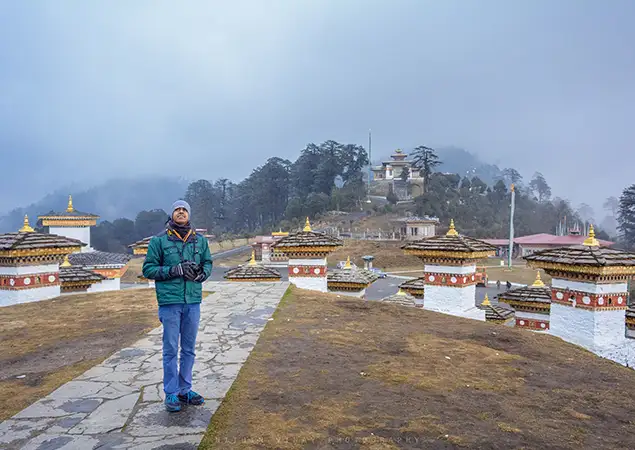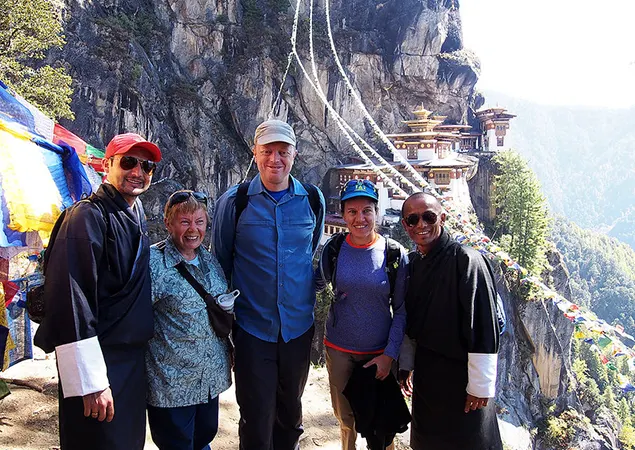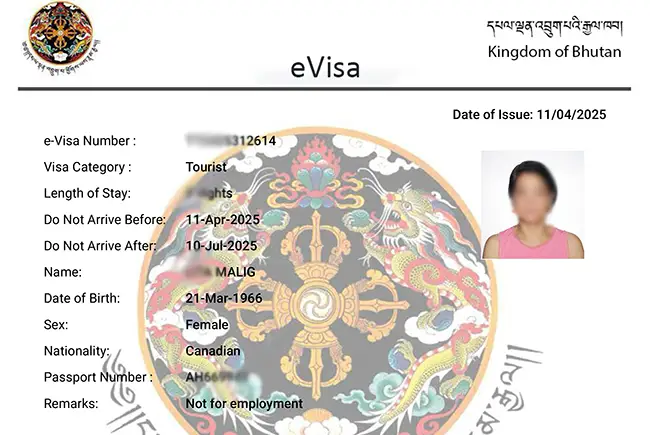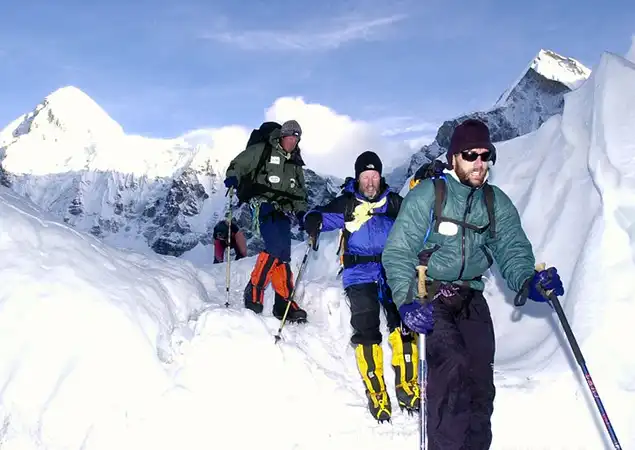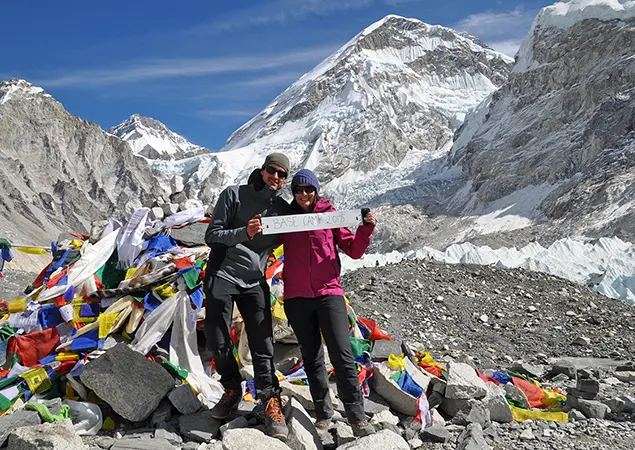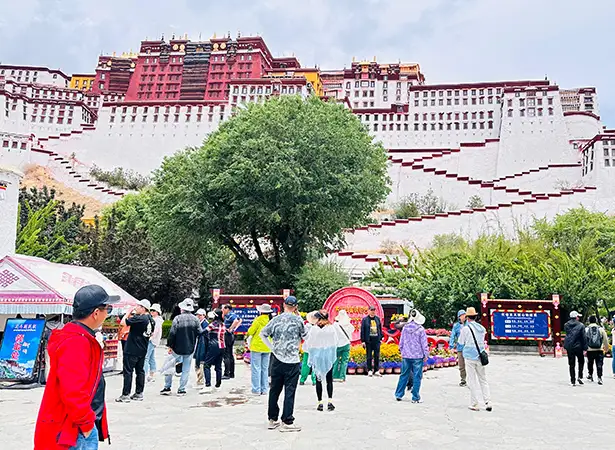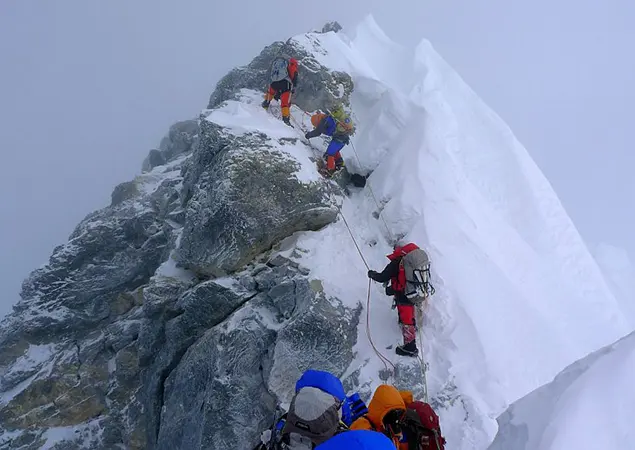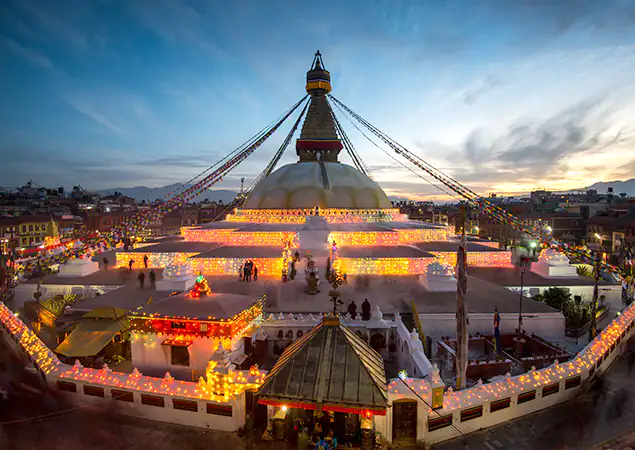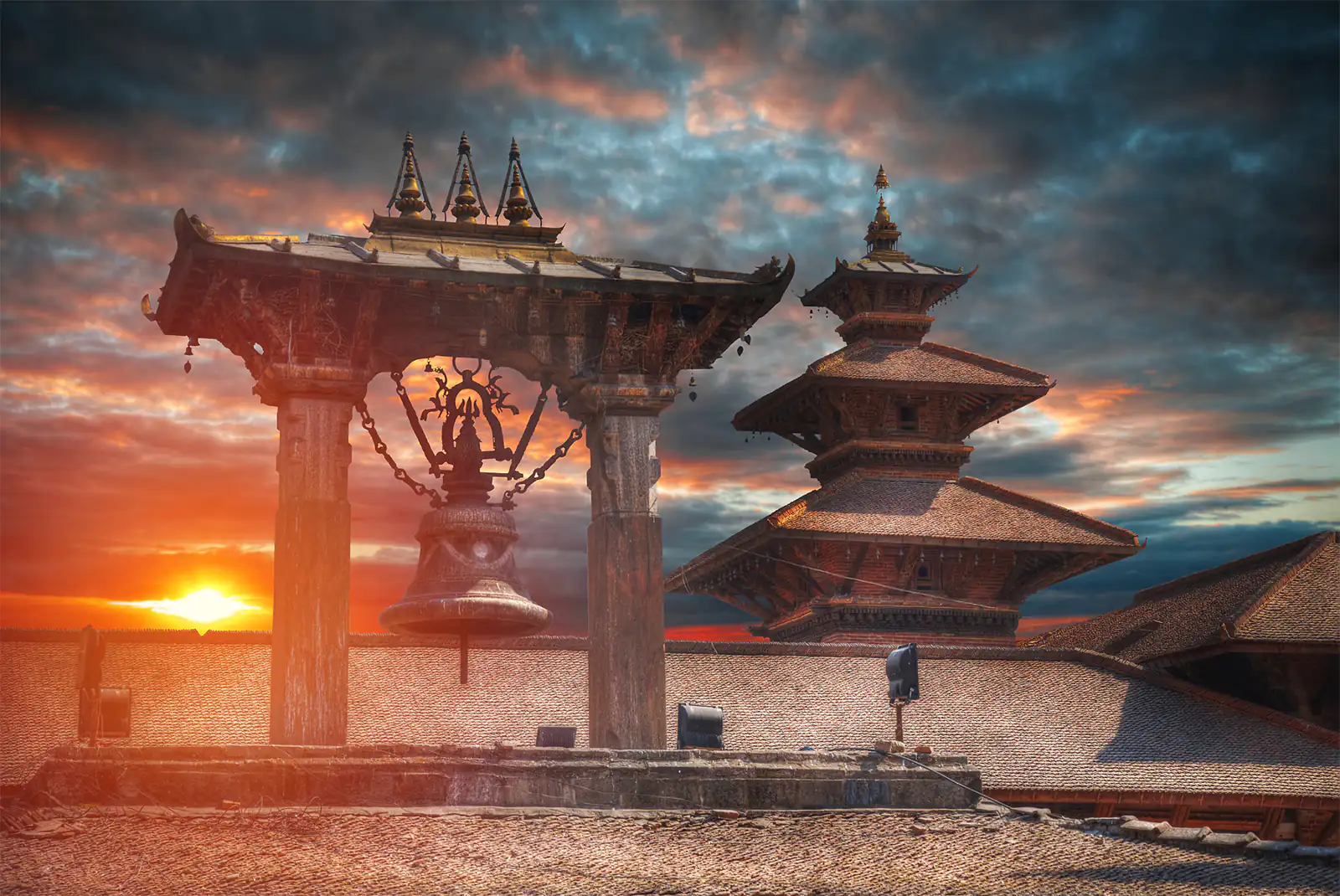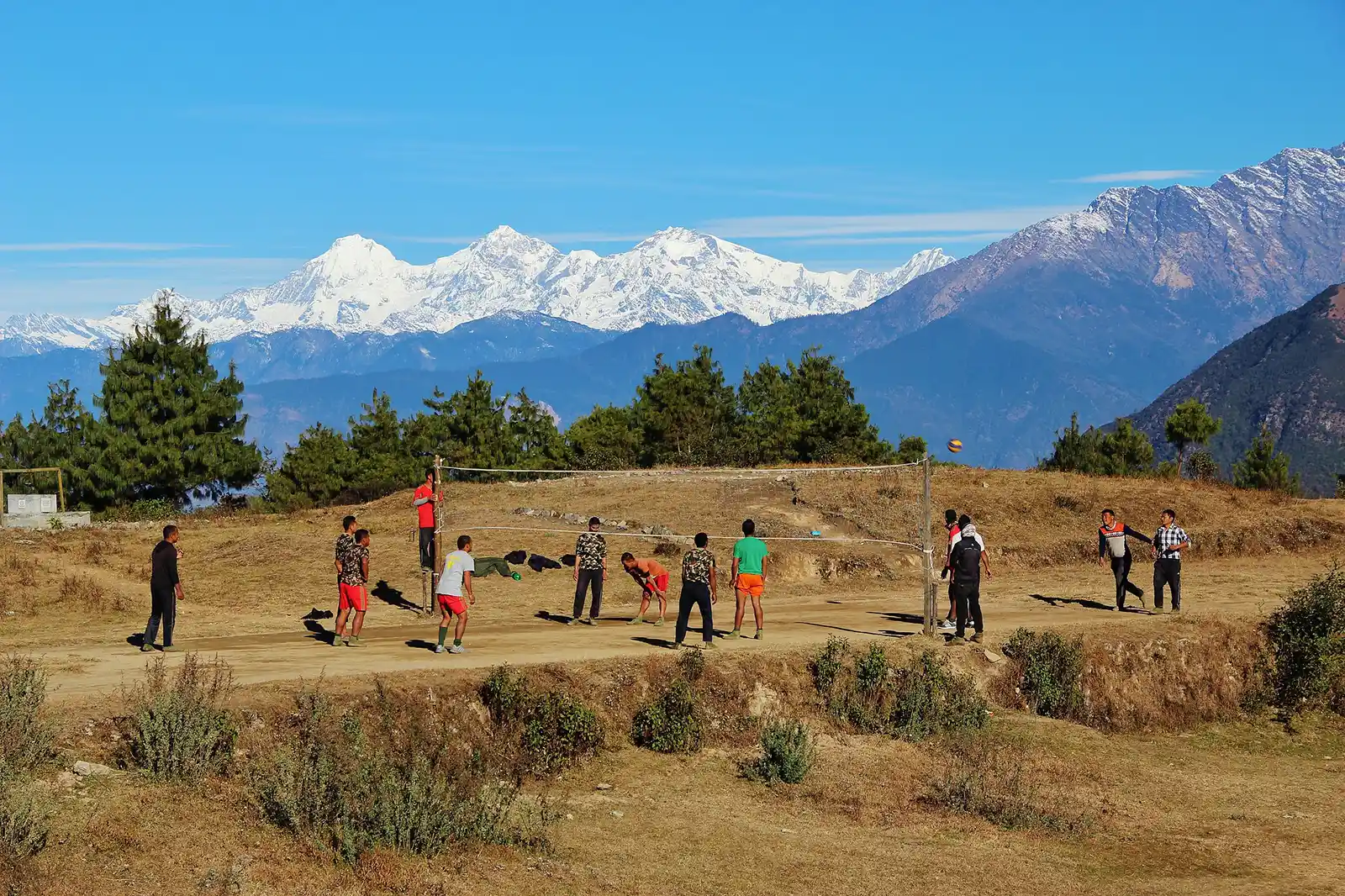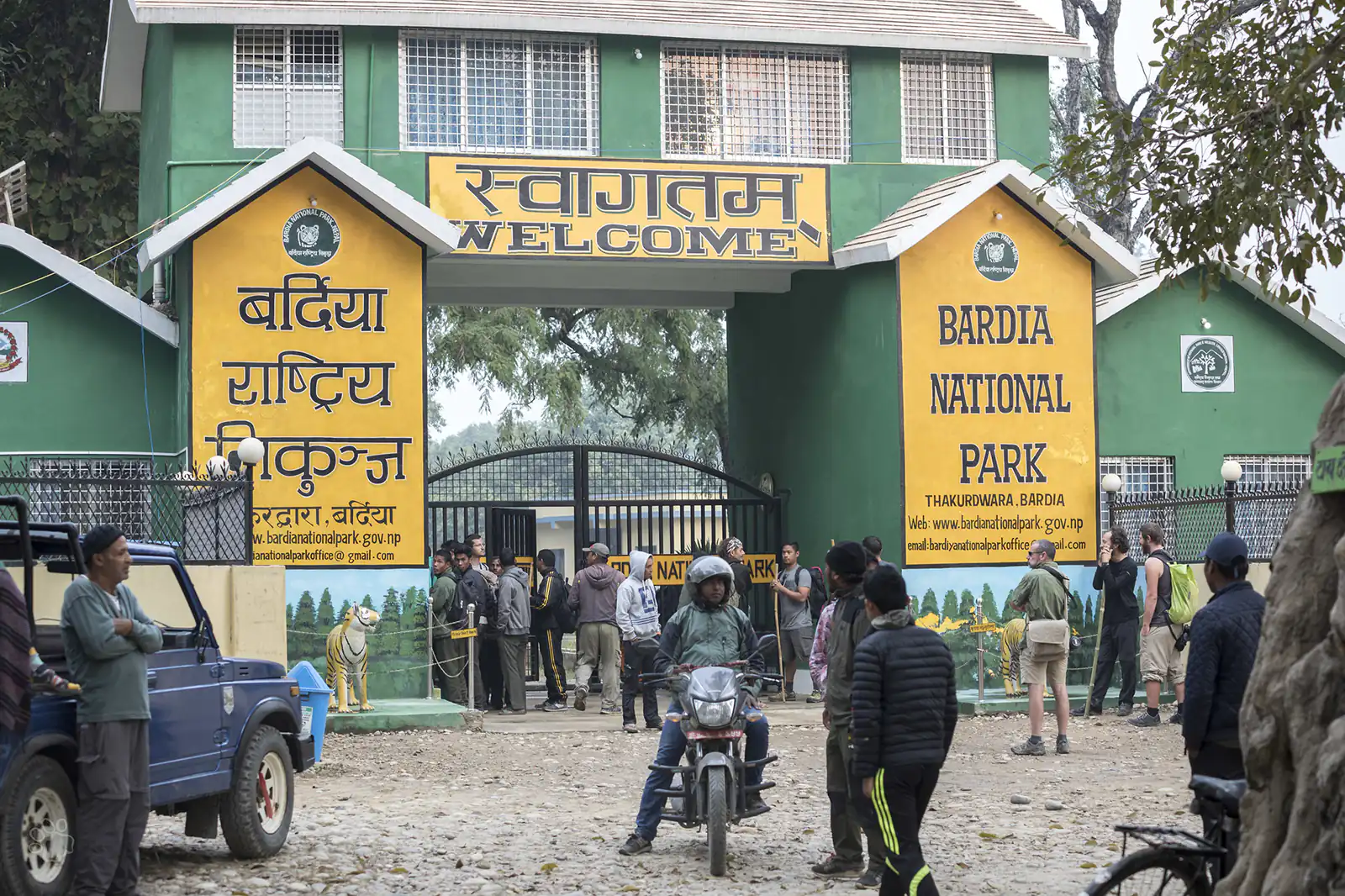Top 10 Places to Visit in Bhutan
1. Paro
- Altitude: ~2,200 m (7,200 ft)
- Location: About 50 km west of Thimphu (1.5–2 hours by road)
- Must-see: Rinpung Dzong (Paro Dzong) – a 17th-century fortress overlooking the Paro valley; Ta Dzong – an old watchtower turned National Museum (artifacts and history); Drukgyel Dzong – picturesque fortress ruins; Chele La Pass (3,988 m) – scenic mountain pass.
- Best time: Spring (March) for the Paro Tshechu festival; autumn (Sept–Nov) for trekking. (Avoid the monsoon rains.)
- Stay: Hotels and lodges in Paro; luxury resorts up the Chele La road.
- Tips: Remove shoes and cover shoulders/knees with temples. Spin prayer wheels clockwise for good fortune.

2. Thimphu
- Altitude: ~2,300 m (7,500 ft)
- Location: Capital city on a mountainside (65 km east of Paro)
- Must-see: Tashichho Dzong – the royal fortress and government seat; Buddha Dordenma – a giant golden statue overlooking the city; Memorial Chorten – a white stupa; Folk Heritage Museum and Textile Museum; weekend Handicraft Market.
- Best time: Spring (Mar-May) for mild weather; autumn (Sept) for Thimphu Tshechu festival.
- Stay: Many hotels, inns, and boutiques are in town, and several lodges are near the river’s outskirts.
- Tips: Learn a few Dzongkha greetings. Tap your forehead with your hands in a prayer gesture as a sign of respect to elders.
3. Dochula Pass
- Altitude: ~3,050 m (10,000 ft)
- Location: 21 km north of Thimphu on the road to Punakha
- Must-see: 108 Druk Wangyal Chortens – white stupas built to honor Bhutanese soldiers; views of the Himalayas (on a clear day, peaks like Gangkar Puensum are visible).
- Best time: Cold, clear mornings in autumn/winter (Oct–Feb); spring (March) is also good. Avoid cloudy monsoon.
- Stay: None at the pass (it’s a day-trip stop). Stay in Thimphu or Punakha.
- Tips: It’s very chilly here, even in summer. Bring a jacket. The memorial chortens deserve respectful silence.
4. Punakha – Best place to visit in Bhutan
- Altitude: ~1,350 m (4,430 ft)
- Location: 75 km northeast of Thimphu (3 hours via Dochula Pass)
- Must-see: Punakha Dzong – the grand fortress at the confluence of the Pho Chhu and Mo Chhu rivers; Punakha Suspension Bridge – a long wooden bridge over the river; Chimi Lhakhang – the Fertility Temple 15 km away, known for blessing couples.
- Best time: Spring (Feb–Mar) for plum blossoms; winter (Dec–Feb) for clear skies. Festivals (e.g., Punakha Drubchen) often occur in winter.
- Stay: Riverside lodges and hotels with garden views. Many have terraces overlooking rice paddies.
- Tips: Cover legs/arms at Punakha Dzong (no shorts or sleeveless). The river crossing is sacred – do not swim.
5. Phobjikha (Gangtey) Valley
- Altitude: ~2,900 m (9,500 ft)
- Location: Central Bhutan, 135 km (6–7 hours) from Thimphu via Wangdue-Punakha
- Must-see: Gangtey Monastery – a 17th-century monastery on a hill; Black-Necked Crane Center – learn about the cranes that winter here (Oct–Feb); quiet valley hikes among pine forests and meadows.
- Best time: Winter (Oct–Feb) to see cranes and snowy peaks. Early autumn (Sept-Oct) is also lovely. Spring has fewer birds, but rhododendrons bloom.
- Stay: A simple lodge or guesthouse is in Gangtey village. Facilities are basic but warm.
- Tips: The valley is a nature preserve – keep noise low and stick to trails.
6. Trongsa
- Altitude: ~2,200 m (7,200 ft)
- Location: Central Bhutan on the main east-west highway; 200 km (7–8 hours) from Thimphu via Punakha and Gangtey
- Must-see: Trongsa Dzong – a soaring white fortress with 360° views; Ta Dzong – the round watchtower next door, now a museum of royal history.
- Best time: July–Sept (post-monsoon with blooming rhododendrons) or autumn. The drive is long but very scenic.
- Stay: There are a few simple hotels or lodges near the dzong. Power may be generator-based.
- Tips: Trongsa is very quiet at night. Use this time to relax with a hot cup of traditional butter tea.
7. Bumthang
- Altitude: ~2,650 m (8,700 ft) in Jakar Valley (Ura Valley is higher)
- Location: Eastern Bhutan. Jakar (main town) is 268 km (10–11 hours) from Thimphu via Trongsa.
- Must-see: Jakar Dzong – fortress overlooking the valley; Kurjey Lhakhang – rock with Guru Rinpoche’s handprint; Jambay & Tamshing Lhakhangs – ancient temples; Mebar Tsho (“Burning Lake”) – Guru Rinpoche legend site.
- Best time: July–Sept for warm days and green hills; early autumn (Sept) for clear weather. Winter roads can get snowy.
- Stay: A range of hotels and farm-stays in Jakar. More basic lodges are in nearby valleys.
- Tips: It’s high altitude – take it easy. The sun can be intense; pack layers and sunscreen. Local cheese and honey are specialties here.
8. Haa Valley
- Altitude: ~2,700 m (8,860 ft)
- Location: Southwest Bhutan, 70 km (2.5 hours) from Paro via Chele La Pass
- Must-see: Lhakhang Karpo (White Temple) and Lhakhang Nagpo (Black Temple) – twin 7th-century temples; Haa Wangchuk Lo Dzong – district fortress; alpine meadows and yak herds. The Haa Summer Festival (late Sept) showcases local culture.
- Best time: Summer to early autumn (July–Sept) when the valleys are green. Winters are snowy, and most roads close.
- Stay: Very limited – one lodge and a few homestays in Haa. Many visitors make a day trip from Paro.
- Tips: Temples may close midday. In Haa, locals often offer tsampa (roasted barley flour) to guests – accept it graciously as a gesture of hospitality.
9. Wangdue Phodrang
- Altitude: ~1,300 m (4,265 ft)
- Location: On the Punakha–Trongsa highway, 70 km north of Thimphu and 12 km north of Punakha.
- Must-see: Druk Wangyel Chortens – 20 white stupas at Dochu La Pass commemorating a royal wedding; site of the old Wangdue Dzong (partially destroyed by fire); nearby Drukgyel Lhakhang. The terraced rice fields here are picturesque.
- Best time: Autumn (Sept–Nov) for festivals and good weather; winter (Dec) for misty mornings. Wangdue Tshechu is held in winter.
- Stay: One new lodge is in Wangdue town; otherwise, base yourself in Punakha.
- Tips: It’s a quiet area – great for peaceful walks. Carry a coat for winter mornings.
10. Tiger’s Nest Monastery (Paro Taktsang)
- Altitude: ~3,120 m (10,240 ft) at the monastery (trail gains ~900 m)
- Location: Cliffside 10 km north of Paro (20 min drive to trailhead)
- Must-see: The monastery itself – a complex of temples built around Guru Rinpoche’s meditation cave, an iconic Bhutan landmark. Stunning valley vistas.
- The best time is in the morning (less fog). Spring (March) or autumn (Sept–Nov) for dry weather. Avoid the monsoon and heavy snow.
- Stay: No lodgings at the site. Hike in the morning and return to Paro overnight. Many hotels are in Paro town.
- Tips: The hike is steep (4–5 hours round-trip). Wear good shoes and hike slowly. Do not smoke or litter on the trail. Inside the monastery, stay quiet and remove hats/shoes as required.
Travel Tips for First-Time Visitors
- Dress Code: Bhutan is conservative. Visitors should cover their shoulders and knees, especially in temples. Men should avoid shorts and sleeveless tops.
- Etiquette: Greet with a smile or slight bow. Use your right hand to give or receive items. Remove your shoes when entering homes and religious buildings. Avoid pointing feet at sacred objects.
- Safety: Bhutan has one of the lowest crime rates in the world, making it very safe. Roads are winding; wear seatbelts and drive carefully. At high altitudes (2,500–3,000m), ascend slowly and stay hydrated to avoid altitude sickness.
- Money: Bhutan’s currency is the Ngultrum (Nu), tied to the Indian Rupee. Indian Rupees (up to 500 INR) are accepted. Credit cards rarely work outside major hotels and shops. ATMs in bigger towns carry cash (Nu or USD) in rural areas.
- Mobile & SIM: Bhutan Telecom (B-Mobile) and TashiCell provide coverage. Buy a local SIM (ID needed) at the airport or in Thimphu. Expect good service in towns; it may cut out on high passes.
- Tipping: Not compulsory, but small tips for guides, drivers, and hotel staff are appreciated if you receive good service.
- Responsible Travel: Bhutan values nature and culture. Carry a refillable water bottle and minimize plastic waste. Don’t disturb wildlife or pick plants. Support local crafts and farmers by buying Bhutanese-made goods.
FAQs
Q: Do I need a visa and a tour guide to travel to Bhutan?
A: Yes. All foreign visitors must obtain a Bhutan visa in advance through a licensed tour operator. You cannot travel independently; you must join a guided tour that provides a local guide and driver.
Q: What is the Sustainable Development Fee (SDF)?
A: The SDF is a mandatory daily fee (about US$100 per adult) that tourists pay. It’s usually included in your tour cost. The fee funds Bhutan’s schools, hospitals, and roads.
Q: Can I travel to all the top 10 places to visit in Bhutan?
A: No. Independent travel is not permitted to travel in these top 10 places to visit in Bhutan. All tourists must book a pre-arranged tour package with a guide and driver.
Q: What kind of food is available in Bhutan?
A: Bhutanese cuisine is hearty and often spicy. Typical dishes include red rice, stews, and curries. The national dish is ema datshi (chili and cheese). Momos (dumplings) and noodle soups are popular. Butter tea and milk tea are standard drinks. Many hotels also offer some Western-style meals.
Q: What currency should I use, and are credit cards accepted?
A: The currency is the Bhutanese Ngultrum (Nu), which equals the Indian Rupee. Indian Rupee notes (up to 500 INR) are accepted. US Dollars are needed for specific fees. ATMs are only in major towns, so they carry enough cash. Credit cards work only in a few large hotels; they are not accepted in remote areas.
Q: What should I pack for these top 10 places to visit in Bhutan?
A: Pack layers. Even if days are warm, evenings and high-altitude trails can be cold. Bring a warm jacket, hat, and gloves. Wear sturdy walking shoes or hiking boots. If traveling in summer, include rain gear. Also, carry sunscreen and any personal medications.
Q: Is Bhutan safe for tourists?
A: Absolutely. Bhutan has one of the lowest crime rates in the world. Visitors are very safe, and locals are generally friendly. Use common sense: secure your belongings and use vehicle seatbelts. Outside Thimphu, medical facilities are basic, so carry any needed prescriptions.
Q: How challenging is the hike to Tiger’s Nest Monastery?
A: It’s moderately complex. The trail is about 6–8 km round-trip with a steep 900 m elevation gain. Plan on 4–5 hours total. There are rest stops along the way (including a café partway). You can hire a horse or porter for part of the climb, but the final section to the monastery must be done on foot.
Q: How do Bhutan tour packages work?
A: Bhutan tours are arranged through licensed operators. You pay a fixed daily rate (usually including the SDF) covering your visa, accommodations, meals, permits, guide, driver, and transport. Tours (typically 5–12 days) can be tailored for culture, trekking, or nature. Once booked, your operator handles all logistics.
Q: When is the best time to visit Bhutan?
A: Spring (March–May) and autumn (Sept–Nov) are ideal. These months offer clear skies, mild weather, and many cultural festivals. Spring has blooming flowers (rhododendrons); autumn has crisp air and ripe harvests. Winter (Dec–Feb) is cold but sunny in the valleys (and good for spotting cranes). The summer monsoon (June–Aug) is wet and misty.
Conclusion
Bhutan offers a tour blending pristine nature, living traditions, and joyous festivals. These 10 places to visit in Bhutan reveal the kingdom’s unique character and values. Each traveler is embraced by Bhutan’s warm hospitality and a unique philosophy of happiness. First-timers experience Bhutan’s focus on well-being and harmony by visiting these places. Bhutan’s careful tourism model and friendly guides make these experiences meaningful.
Exploring these highlights is an ideal way to understand Bhutan’s soul. The kingdom’s emphasis on Gross National Happiness ensures that travelers leave with photos and a sense of peace and joy. First-time visitors can be confident that this journey through Bhutan’s highlights will enrich their lives and give them a lasting taste of Bhutanese happiness.
